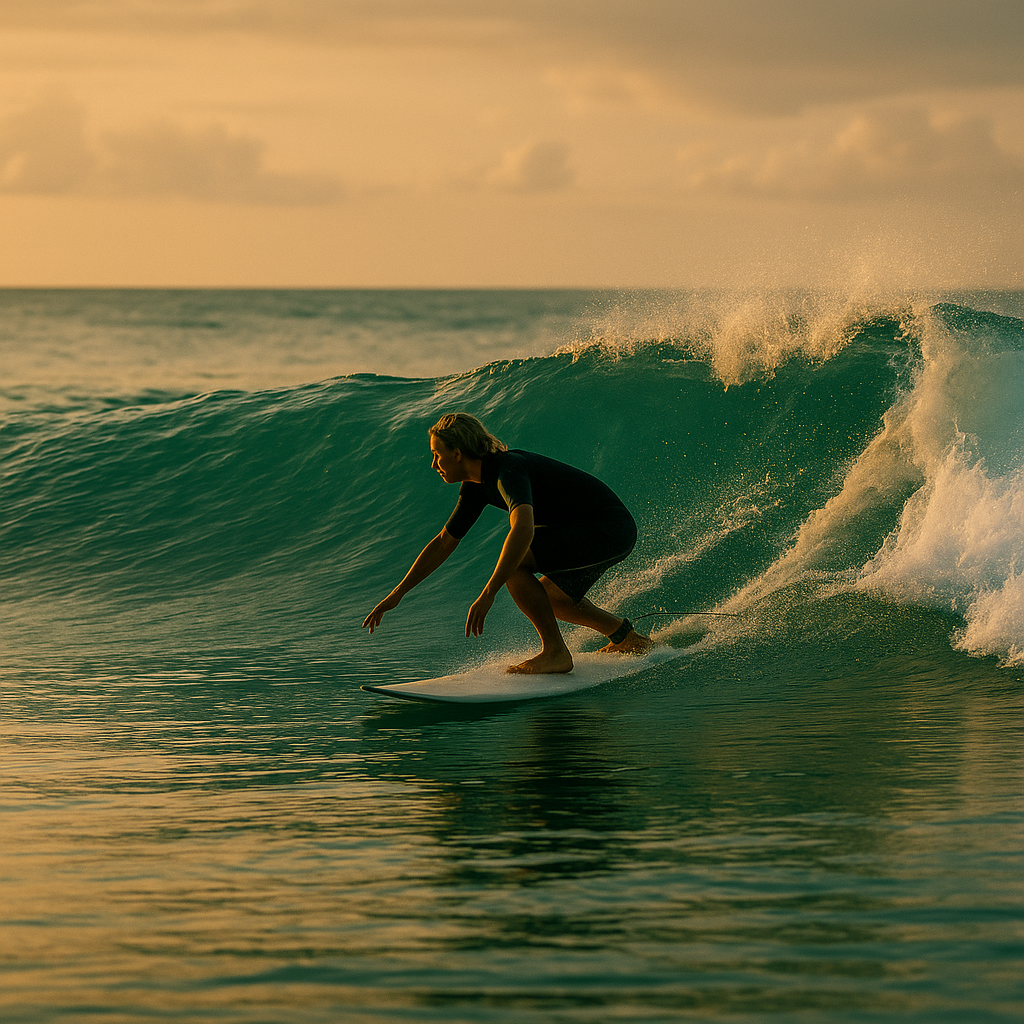
The Perfect Middle Ground for Surfers
If you’ve ever found yourself caught between the stability of a longboard and the maneuverability of a shortboard, the funboard might be your ideal match. True to its name, a funboard is designed to make surfing more — well, fun. It’s one of the most versatile surfboard types, offering an accessible balance between paddle ease, speed, and control.
Funboards are often the go-to choice for progressing beginners and intermediate surfers who are ready to take their skills to the next level.
What Is a Funboard?
A funboard typically ranges from 6’6” to 8’0” in length, bridging the gap between a shortboard and a longboard. Its design combines the best of both worlds:
- The volume and paddle power of a longboard
- The turning ability and performance potential of a shortboard
Most funboards feature a rounded nose, a wide middle section for stability, and a narrower tail for easier turns.
Common Dimensions
- Length: 6’6” – 8’0”
- Width: 20” – 22”
- Thickness: 2.5” – 3”
Ideal Fin Setups
Funboards can feature various fin setups depending on the feel you’re after:
- Single Fin: Smooth and classic, perfect for cruisy lines.
- 2+1 Setup: Adds control and versatility — great for transitioning from longboards.
- Thruster (Tri-Fin): More responsive and high-performance for bigger waves.
Who Should Ride a Funboard?
Funboards are ideal for:
- Beginners moving up from soft-tops who want more maneuverability.
- Intermediates refining turns and speed control.
- Experienced surfers looking for a relaxed board that performs well in smaller surf.
If you want something that paddles easily but still allows you to carve, this board fits the bill.
Pros of Riding a Funboard
1. Easy to Paddle and Catch Waves
The added volume provides buoyancy and speed while paddling, allowing you to catch waves earlier and with less effort — a big advantage for those still building paddle strength.
2. Stable Yet Maneuverable
Funboards are wide enough for balance but short enough to turn easily. You’ll be able to progress from trimming to carving without losing stability.
3. Versatile in Various Conditions
Funboards handle everything from knee-high peelers to overhead waves. While not a specialty board for any one condition, it performs decently across most wave types.
4. Great Transition Board
It’s the perfect bridge between beginner-friendly longboards and more performance-oriented shortboards.
Cons of Riding a Funboard
1. Not Ideal for Hollow or Powerful Waves
Due to their extra width and volume, funboards can feel cumbersome in steep, fast-breaking waves. They’re best suited for small to medium surf.
2. Heavier and Less Agile Than Shortboards
If you’re aiming for radical turns, airs, or quick maneuvers, you’ll likely outgrow a funboard as you advance.
3. Awkward in Crowded Lineups
Because of their larger size, funboards take up more space and can be harder to navigate around other surfers — especially in busy breaks.
Best Conditions for Funboards
- Wave Height: 1–6 feet
- Wave Type: Soft, rolling beach breaks or mellow point breaks
- Skill Level: Beginner to intermediate
If you’re surfing a spot with gentle takeoffs or long, slow waves, a funboard will feel smooth, responsive, and forgiving.
Pro Tip: Board Material Matters
- Epoxy Funboards: Lightweight, more buoyant, and durable — great for beginners.
- Polyester Funboards: Slightly heavier but offer better flex and responsiveness for experienced surfers.
Should You Get a Funboard?
If your goal is to enjoy consistent sessions without struggling to catch waves, the answer is likely yes. Funboards give you the freedom to ride more waves, practice turns, and explore different styles of surfing without the frustration that comes from overly technical equipment.
Final Thoughts
Funboards live up to their name — they make surfing approachable, consistent, and enjoyable across a range of conditions. Whether you’re stepping down from a longboard or stepping up from a shortboard, this all-around shape can keep you stoked year-round.
